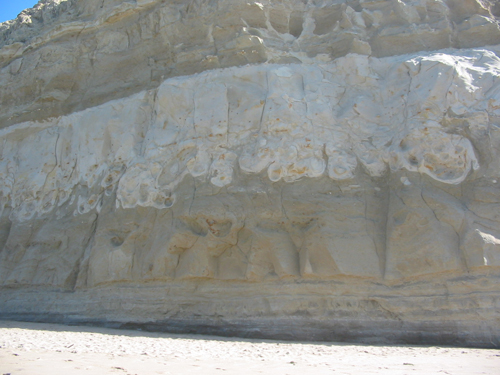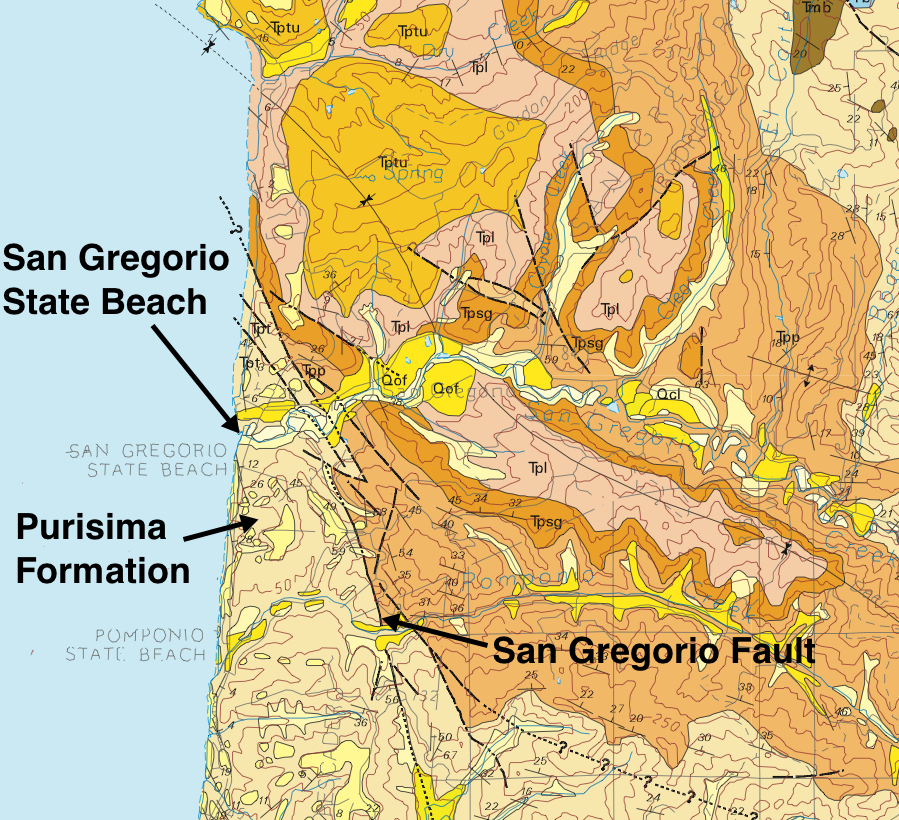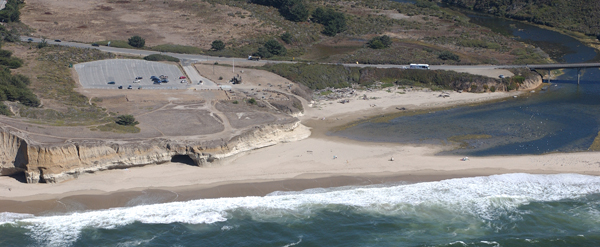 This week's post is the second in a series highlighting locations around the Bay Area that combine beautiful scenery with great geology. Check out the first post in the series about Point Reyes National Seashore.
This week's post is the second in a series highlighting locations around the Bay Area that combine beautiful scenery with great geology. Check out the first post in the series about Point Reyes National Seashore.
San Gregorio State Beach is approximately 40 miles south of San Francisco near the junction of Highway 1 and 84. This beach is one of my favorite spots along the coast between Half Moon Bay and Santa Cruz.
The rocks that are exposed in the beach cliffs are a marine sedimentary unit called the Purisima Formation which was deposited between 2.5 and 7 million years ago. The part of the Purisima that is exposed in the cliffs at San Gregorio beach is called the Tahana Member and is characterized by fine-grained sandstone and silty mudstone. The whiter layers contain a lot of volcanic ash that are chemically similar to volcanic deposits of the Snake River Plain in southern Idaho.
One of these volcanic ash-rich layers is noticeable in this photograph below (for scale, the height of base of whiter layer is approximately 10-12 feet from beach). Note how irregular and convoluted the bottom boundary of the whiter layer is. This is most likely a result of what geologists call 'soft-sediment deformation', which basically means that when the whiter sediment was deposited it sank into the underlying layer (think lava lamp). These sedimentary layers were deposited in a marine setting and there was still a lot of water in the sediment making it quite soupy and soft.



